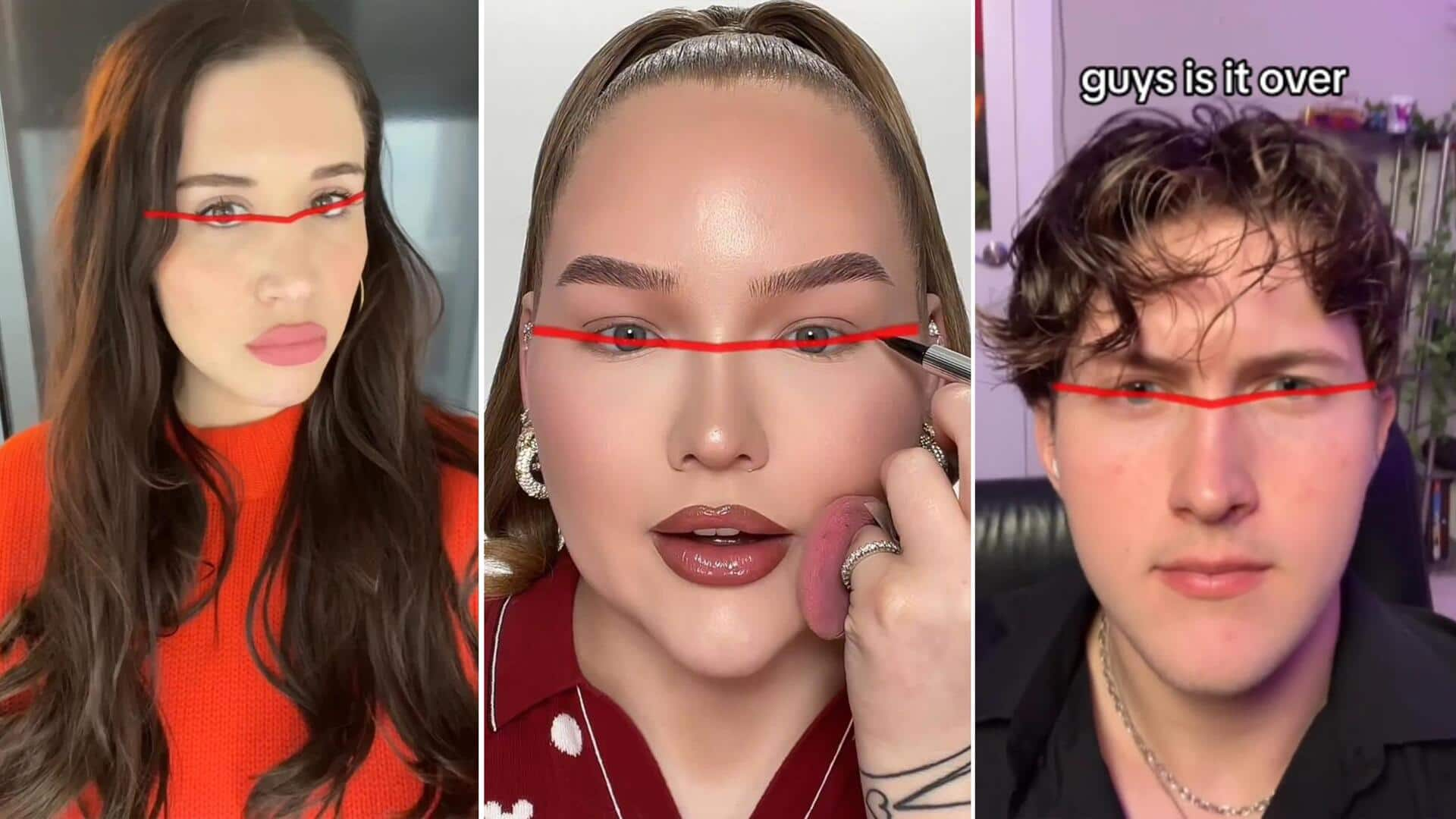
Canthal tilt: TikTok's latest obsession with eye angle
What's the story
A new TikTok filter is prompting some users to question their "attractiveness" based on their "canthal tilt," or the placement of the inner and outer corners of their eyes. Each user's unique canthal tilt is identified by the effect on TikTok by drawing a red line across the corners of the eyes. But can it really determine attractiveness? Let's find out.
Canthal tilt
What is canthal tilt?
The canthal tilt, or "fox-eyed look," is the angle between your inner and outer eyes. When the outside corner of the eye is about five to eight degrees higher than the inner corner, it is referred to as a positive canthal tint. Conversely, a negative canthal angle denotes a difference of five to eight degrees below the eye's inner corners.
Factors
Factors influencing canthal tilt
The inherent shape and size of a person's eyes can influence the perceived canthal tilt. The natural shape and position of a person's eyes are largely determined by genetics. As we age, the skin and muscles around the eyes can lose elasticity, leading to changes in the canthal angle. Some individuals opt for surgical or non-surgical treatments to enhance or modify their canthal tilt.
Claims
What the angle determines
Canthal tilt plays a vital role in maintaining facial symmetry and balance. It tends to look a little younger since as one grows or matures, the canthal tilt can often become more pronounced or the skin on the eyelids may even appear to be hooded. Thus a negative canthal tilt may create an older, more fatigued, or distressed look.
Bottomline
Bottomline: Attractiveness is subjective
Beauty isn't straightforward or objective, and attractiveness isn't solely dictated by specific physical traits. Even those with negative canthal results frequently have a high level of attractiveness. They just don't fit this tool's specifications in terms of measurements. It is important to remember that attractiveness is a subjective concept. There is no one-size-fits-all definition to determine beauty.